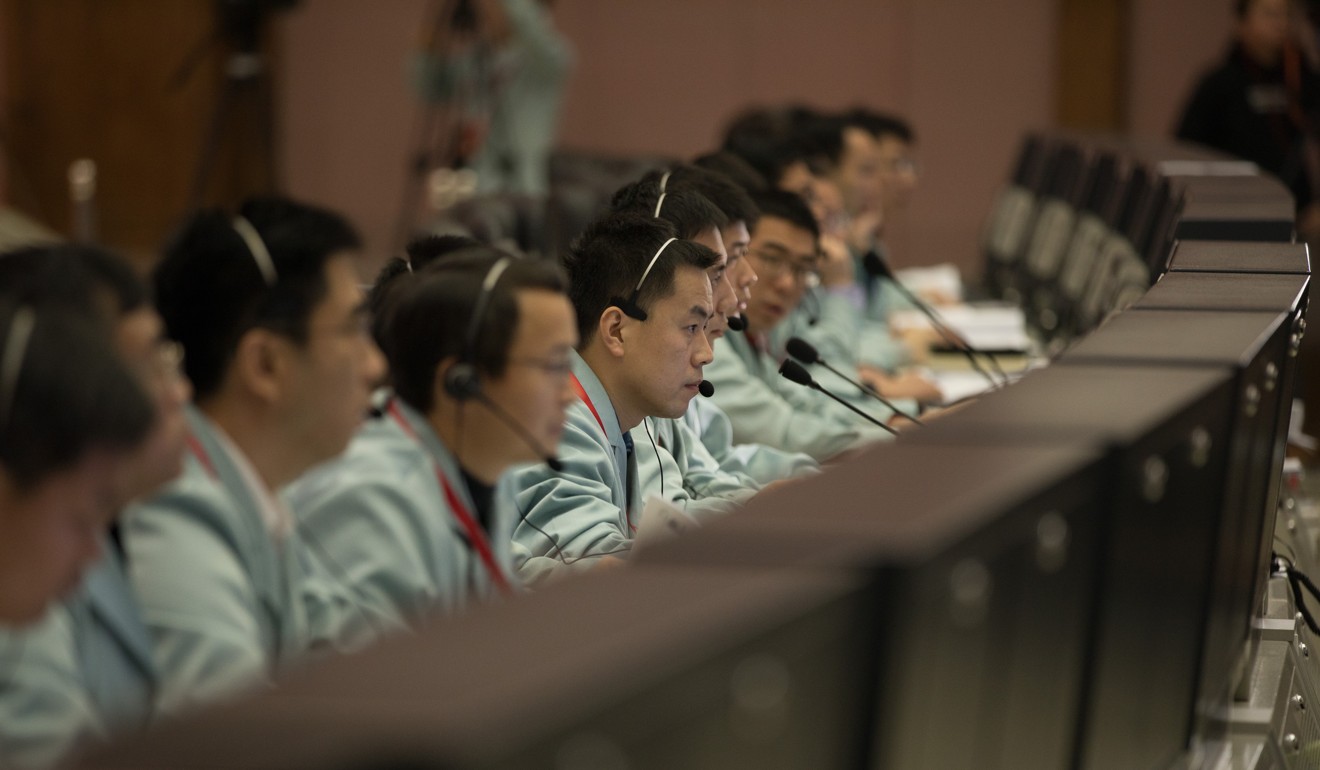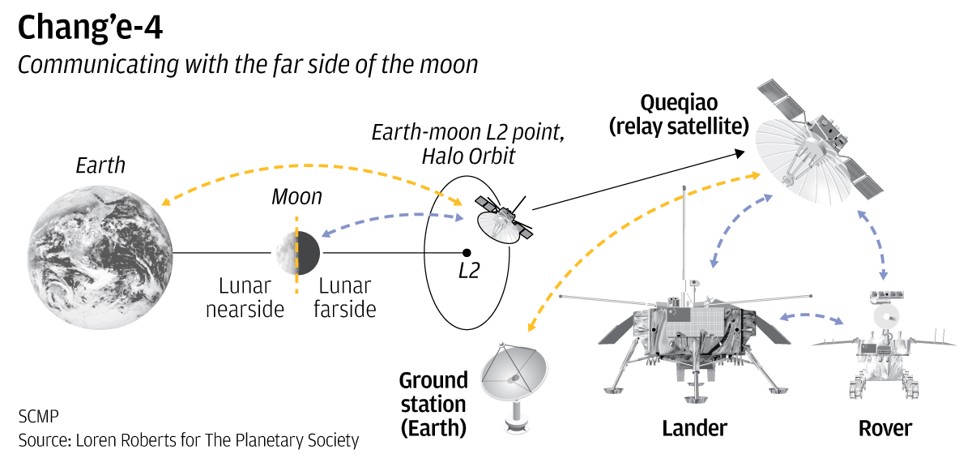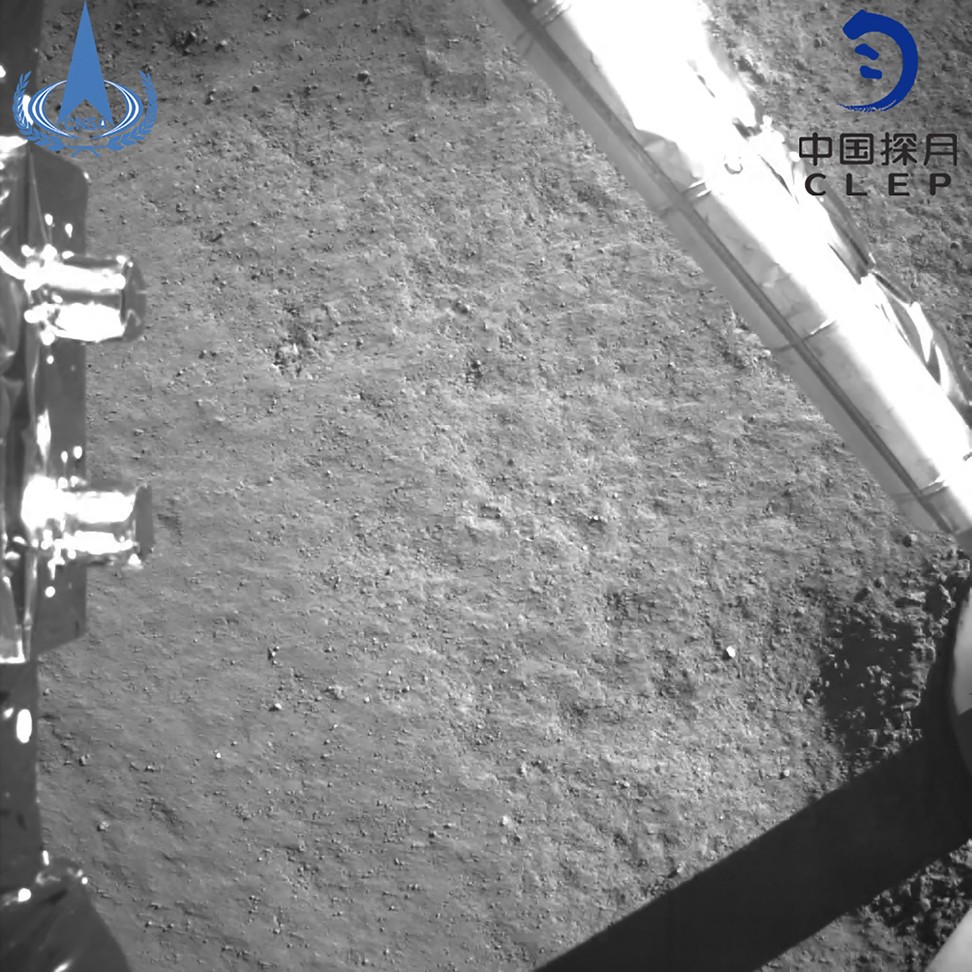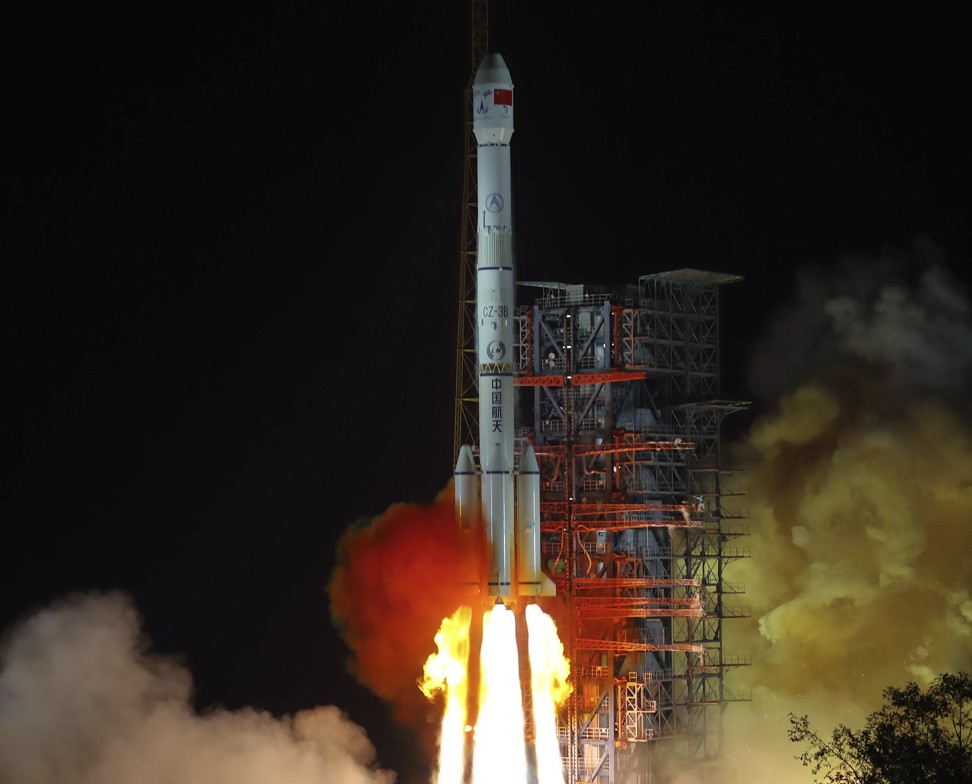
Chang’e 4 landing on far side of moon marks start of China’s space race with the US
- Lunar probe’s safe arrival a landmark in China’s ambition to become a space power, mission’s chief scientist says
- Chang’e ‘lifted the mysterious veil’ from moon’s far side, China National Space Administration says
China’s space programme scored a major victory on Thursday morning when the Chang’e 4 lunar spacecraft landed on the far side of the moon, territory that has never before been explored.
The probe completed the world’s first ever soft-landing on the uncharted far side at 10.26am Hong Kong time, and almost immediately transmitted a “close range” image of the mysterious land back to Earth.
The photograph showed Chang’e was sitting in a relatively flat area with a small crater just metres away. The mountain range of the Von Karman crater could be seen in the distance.
The China National Space Administration (CNSA) said the mission had “lifted the mysterious veil” from the far side of the moon, which is permanently blocked from view from Earth, and “opened a new chapter in human lunar exploration”.
“China is making a tremendous effort to become a space power. This mission will be a landmark event in this endeavour,” Wu Weiren, chief scientist of the Chang’e 4 programme, said in an interview with state broadcaster China Central Television.
China’s Chang’e 4 lunar probe sends first photo of far side of the moon after historic soft landing
But making a soft and successful landing is just the start. The next stage of the mission, according to the CNSA, is for Chang’e 4 to release a rover to explore the surrounding area, fire up ground penetration radar to map the moon’s inner structures, analyse soil and rock samples for minerals and chemicals with potential economic values, and activate a radio telescope to search for possible signals from distant universes.
The probes also carried a canister filled with air, soil, water, bacterium, silkworm eggs, the seeds of a small flowering plant and a potato. Scientists hope that the small eco-system will spring to life and produce the first blossoming flowers on the moon in about three months’ time.
Dr Chen Hongqiao, a researcher at Guangdong University of Foreign Studies in the south China city of Guangzhou, said the landing could intensify the space race between China and the United States.
“Today the fight [between China and the US] is on trade. Tomorrow it can be on the moon,” he said.
The US government recently announced an ambitious plan to colonise the moon with a permanent outpost. The first stage of such a programme would involve Nasa building a space station, known as a lunar orbital platform, within the moon’s orbit, which would serve as a gateway to future settlements.
Dr Zhu Jin, the director of Beijing Planetarium, said the new race between China and the US to the moon would be “very different” from the previous one between the US and the former Soviet Union during the cold war.
“The previous one was largely driven by politics,” Zhu said. “This race will be mainly driven by a genuine interest in the moon itself and potential business opportunities.”

The former Soviet Union launched the world’s first lunar satellite in 1959, while the US achieved six manned landings. Of the 265 spacecraft sent towards the moon by all nations, only one US probe made it to the far side, but it crashed.
Plainly aware of the risks involved in the Chang’e 4 mission, China decided not to broadcast it live so as to reduce the pressure on the scientists and engineers involved, according to a researcher with knowledge of the matter.
During its landing, the 4 tonne Chang’e 4 lunar craft fired its reverse thrusters about 10:15am to reduce speed and made a steep descent towards one of the most deadly landing zones in the solar system, the CNSA said.
Unlike the relatively flat, smooth near side of the moon that faces the Earth, more than 90 per cent of the surface of the far side is rugged, featuring mountains twice the height of Everest.
Communication is also a challenge. Radio waves from Earth cannot reach the far side back of the moon, so Change 4’s link to the flight control centre in Beijing is dependent entirely on a small, distant relaying satellite called Queqiao.
During its descent, Chang’e 4 had to aim its antenna constantly at Queqiao to avoid losing contact. About 100 metres (330 feet) above the lunar surface, the spacecraft hovered automatically and scanned the area below with a high definition camera for unexpected rocks and slopes.
2019 China science look-ahead: from moon landing to an AI arms race, four things to expect in the year ahead
Chang’e 4 was launched atop a Long March 3B carrier rocket on December 8 from the Xichang Satellite Launch Centre in southwest China’s Sichuan province. It entered lunar orbit four days later.
The Von Karman crater, about twice the size of Los Angeles, is named after Theodore von Karman, lead scientist of the early US space programme. Karmon is also the mentor of Hsue-Shen Tsien, the founding father of China’s space programme, so the landing site had significant meaning, state media said.
China was not without help on the Chang’e 4 mission. Scientists from The Netherlands contributed to the construction of a low frequency signal detector, while experts from Germany helped build the device to measure radioactivity on the lunar surface. Sweden provided the atomic detector and Saudi Arabia contributed a camera.
China also has plans to launch a returnable spacecraft – Chang’e 5 – by 2020, which will include a lunar lander and a rover that could return to Earth after collecting samples and performing lunar surveys.




